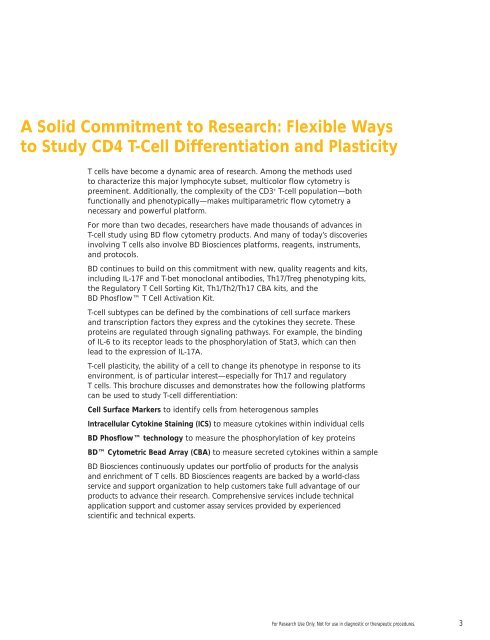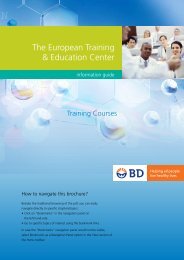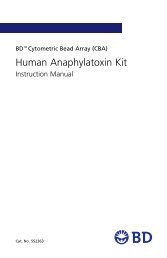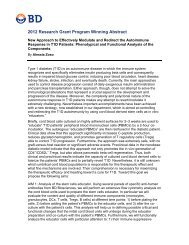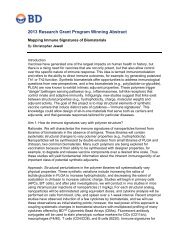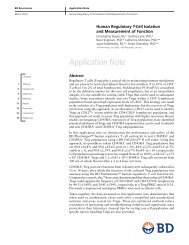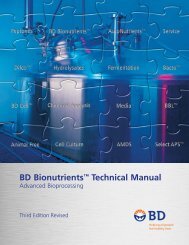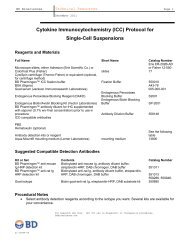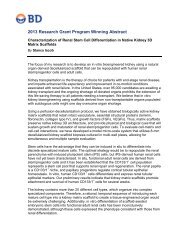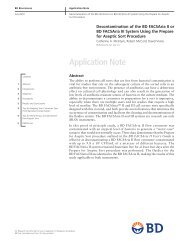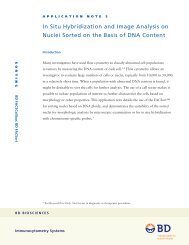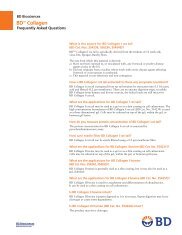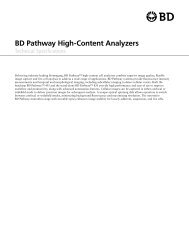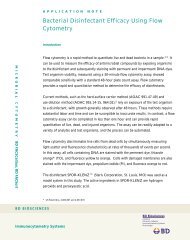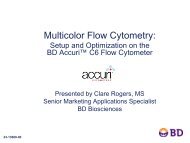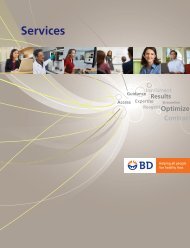T Cell Research Brochure - BD Biosciences
T Cell Research Brochure - BD Biosciences
T Cell Research Brochure - BD Biosciences
You also want an ePaper? Increase the reach of your titles
YUMPU automatically turns print PDFs into web optimized ePapers that Google loves.
A Solid Commitment to <strong>Research</strong>: Flexible Ways<br />
to Study CD4 T-<strong>Cell</strong> Differentiation and Plasticity<br />
T cells have become a dynamic area of research. Among the methods used<br />
to characterize this major lymphocyte subset, multicolor flow cytometry is<br />
preeminent. Additionally, the complexity of the CD3 + T-cell population—both<br />
functionally and phenotypically—makes multiparametric flow cytometry a<br />
necessary and powerful platform.<br />
For more than two decades, researchers have made thousands of advances in<br />
T-cell study using <strong>BD</strong> flow cytometry products. And many of today’s discoveries<br />
involving T cells also involve <strong>BD</strong> <strong>Biosciences</strong> platforms, reagents, instruments,<br />
and protocols.<br />
<strong>BD</strong> continues to build on this commitment with new, quality reagents and kits,<br />
including IL-17F and T-bet monoclonal antibodies, Th17/Treg phenotyping kits,<br />
the Regulatory T <strong>Cell</strong> Sorting Kit, Th1/Th2/Th17 CBA kits, and the<br />
<strong>BD</strong> Phosflow T <strong>Cell</strong> Activation Kit.<br />
T-cell subtypes can be defined by the combinations of cell surface markers<br />
and transcription factors they express and the cytokines they secrete. These<br />
proteins are regulated through signaling pathways. For example, the binding<br />
of IL-6 to its receptor leads to the phosphorylation of Stat3, which can then<br />
lead to the expression of IL-17A.<br />
T-cell plasticity, the ability of a cell to change its phenotype in response to its<br />
environment, is of particular interest—especially for Th17 and regulatory<br />
T cells. This brochure discusses and demonstrates how the following platforms<br />
can be used to study T-cell differentiation:<br />
<strong>Cell</strong> Surface Markers to identify cells from heterogenous samples<br />
Intracellular Cytokine Staining (ICS) to measure cytokines within individual cells<br />
<strong>BD</strong> Phosflow technology to measure the phosphorylation of key proteins<br />
<strong>BD</strong> Cytometric Bead Array (CBA) to measure secreted cytokines within a sample<br />
<strong>BD</strong> <strong>Biosciences</strong> continuously updates our portfolio of products for the analysis<br />
and enrichment of T cells. <strong>BD</strong> <strong>Biosciences</strong> reagents are backed by a world-class<br />
service and support organization to help customers take full advantage of our<br />
products to advance their research. Comprehensive services include technical<br />
application support and customer assay services provided by experienced<br />
scientific and technical experts.<br />
For <strong>Research</strong> Use Only. Not for use in diagnostic or therapeutic procedures.<br />
3


